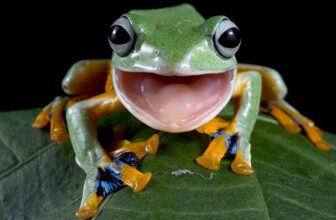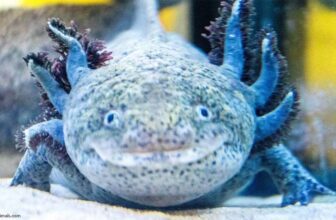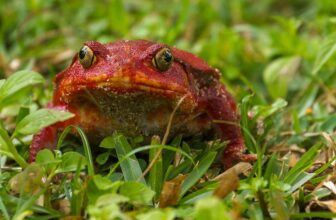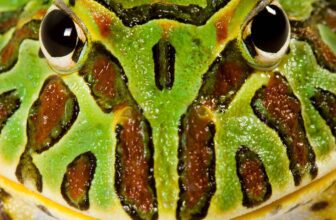The Albino African Clawed Frog is the variety that is most commonly sold as pets among all the types clawed frogs in Africa. Have you heard about these frogs before? Have you always been interested in getting an aquatic pet for yourself? If yes, then you have come just to the right place. In this article, we will introduce you to African Clawed Frogs, their physical appearances and their behavior.
If you are not a gerbils type, and you are interested in getting a frog as pets, then we will also give you enough Albino African Clawed Frog Care information that will be handy for you.
Albino African Clawed Frog Care
The African Clawed Frog is known by many names such as African claw-toed frog, African clawed toad and the like. The Latin name for this species of aquatic animals is Xenopuslaevis, which can be translated as smooth and strange feet. The unique differentiation mark on this frog from all other varieties of frogs is the presence of three short but sharp claws on each hind foot. These claws are very useful for the frogs when they want to tear down their prey into small pieces.
Before understanding about the Albino African Clawed Frog Care, you should know some basic details about these species. Here are some must-know facts about them:
- They don’t have a tongue and teeth.
- They use their hands to push the food into their mouth; they have a hyobranchial pump inside their body to help them suck the food from the mouth to the insides.
- They are 100% aquatic; however, during rainy seasons, they move to other lakes or ponds in search of water.
- They are the only amphibians that have claws to climb and tear food into small pieces.
- Though they are most commonly found in the areas of Sub-Saharan Africa, they are also occasionally seen in North America, Europe, and South America.
- They don’t have ears, but they have lateral lines running all along their body and underneath their body, which help them understand movements and vibrations in the water
- They have a long lifespan; they live for at least 15 years in the wild, but in captivity, they can live for a maximum of up to 30 years
- These frogs have been kept as pets for more than half a century now; therefore, it is not very difficult or complex to bring them home.
- One of the most important points of Albino African Clawed Frog Care is to identify these animals properly. Mostly, pet owners may try to exploit your ignorance and sell African dwarf frogs to you. Never get confused between the dwarf frogs and clawed frogs. Here are some tips that can help you with this:
- Watch out for the webbed feet; Albino African Clawed Frogs have webbed hind feet and autonomous digits in their front feet. The Dwarf Frogs, on the other hand, have 4 webbed feet.
- Watch out for the eye position of these frogs. When the eyes are positioned on the sides of their head, they are dwarf frogs. So, don’t buy them. The African Clawed Frogs have eyes positioned on the top of their heads.
- Watch out for the shape of their snouts. When the frog’s snout is long and pointed, it belongs to the Dwarf Frog category. The snout of an Albino African Clawed Frog is curved and flat.
Albino African Clawed Frog Care – Top points to keep in mind after you bring them home
- The average length of an African clawed frog is about 5 inches; therefore, you must house them in big tanks where it can freely swim about. Always ensure that you create a space of about 10 gallons per frog to be sure that your pet is safe and secured inside the tank.
- The tank must be lined with a proper substrate. Rocks, wood, and branches are great substrate ideas. Avoid very fine materials because the frogs may swallow them, leading to severe health issues.
- Ensure that you cover the tank with a proper, tight lid to avoid the frogs popping out and escaping from the tank.
- These frogs are not very particular about heat and lighting. So, a room temperature of about 75 degrees and regular lighting is more than enough to keep them comfortable in their tanks.
- One of the most important elements in the Albino African Clawed Frog Care plan is its diet schedule. Please follow the below points when you feed your pets:
- These clawed frogs eat a lot of live and dead foods. Reptile sticks, amphibian sticks and a variety of worms (earthworms, waxworms, bloodworms, etc.), brine shrimp, etc. are great options to feed these frogs.
- You can also feed them specific clawed frog pet supplements that are available in many online and retail pet stores.
- If you propose to feed cat food or dog food to these clawed frogs, we would suggest you talk with a veterinarian first.
- Don’t
over feed them, because they are prone to problems such as obesity.
- Do you notice a thick, white-colored growth on the skin of your frogs? If yes, it could be a sign that your pet is suffering from a severe fungal infection. Get it checked immediately with an expert veterinarian.
- Red-Leg Disease is also one of the most common diseases that affect all aquatic frogs including African clawed varieties. The first symptom for this disease is reddening of the frog’s legs. When you notice this, don’t waste any time in consulting your veterinarian.
An African Clawed Frog can live up to 25 to 30 years in captivity if it is cared for properly. Therefore, you would have understood by now that an Albino African Clawed Frog Care plan is not just a one-off activity; it is a long–term commitment that requires a lot of time, energy and attention from you.
Conclusion:
You have to ensure that your pet frogs live in a safe and healthy environment by cleaning the water regularly and giving it proper foods in the right quantities. Keep checking your pet’s body frequently to see if you can spot any abnormal issues, so that you can spot health scares in the early stages. Enjoy the time that your pet frog gives you, by taking full care of it.
Frequently Asked Questions:
Can African clawed frogs live together?
African clawed frogs can live together but it is not recommended. They are carnivorous and may become aggressive towards each other, especially when competing for food or territory. Keeping them separately in their own enclosure is the best way to ensure their health and well-being.
How long do African clawed frogs live?
African clawed frogs can live up to 20 years in captivity with proper care. However, their lifespan is typically shorter in the wild due to predation, disease, and other factors. Providing a suitable environment, proper nutrition, and regular veterinary care can help ensure a healthy and long life for pet African clawed frogs.
What do African clawed frogs eat?
African clawed frogs are carnivorous and eat a variety of prey in the wild, including insects, small fish, crustaceans, and worms. In captivity, they can be fed a diet of commercial pellets, frozen or live brine shrimp, bloodworms, and other small aquatic animals.







Thanks for finally writing about >Albino African Clawed Frog
Care – Known Pets <Liked it!
u welcome
We have a female albino African clawed frog that’s about 5 years. We have a male that’s 17 years. They are both in the tank with a large goldfish.
The female for the last 3 weeks has had something coming out of her rectum off and on. We look at her and there is something coming out and the next time there is nothing. It has been like this for 3 weeks straight.
Whatever is coming out, one of them in the tank is eating it right away, possibly the goldfish.
What comes out is usually brown in color that looks like one of the frog food sticks or a clear bubble.
Is this normal or what can I do to help the frog?
Thank you
Mike
Hello!
I’ve one of these little fellows. He has lived with me for two years and I love him dearly. However, where I live, there really aren’t any aquatic veterinarians. In case he gets ill, what should I do? I’ve medicine for my aquariums but I’m unsure if it would work on him or not. Thank you!
if there is no aquatic veterinarians near you, then you may consider being more careful in taking care of your pet. Watch out what you are feeding it and keep the zone clean. In case anything worse happened you should visit any pet vet that should do the job.